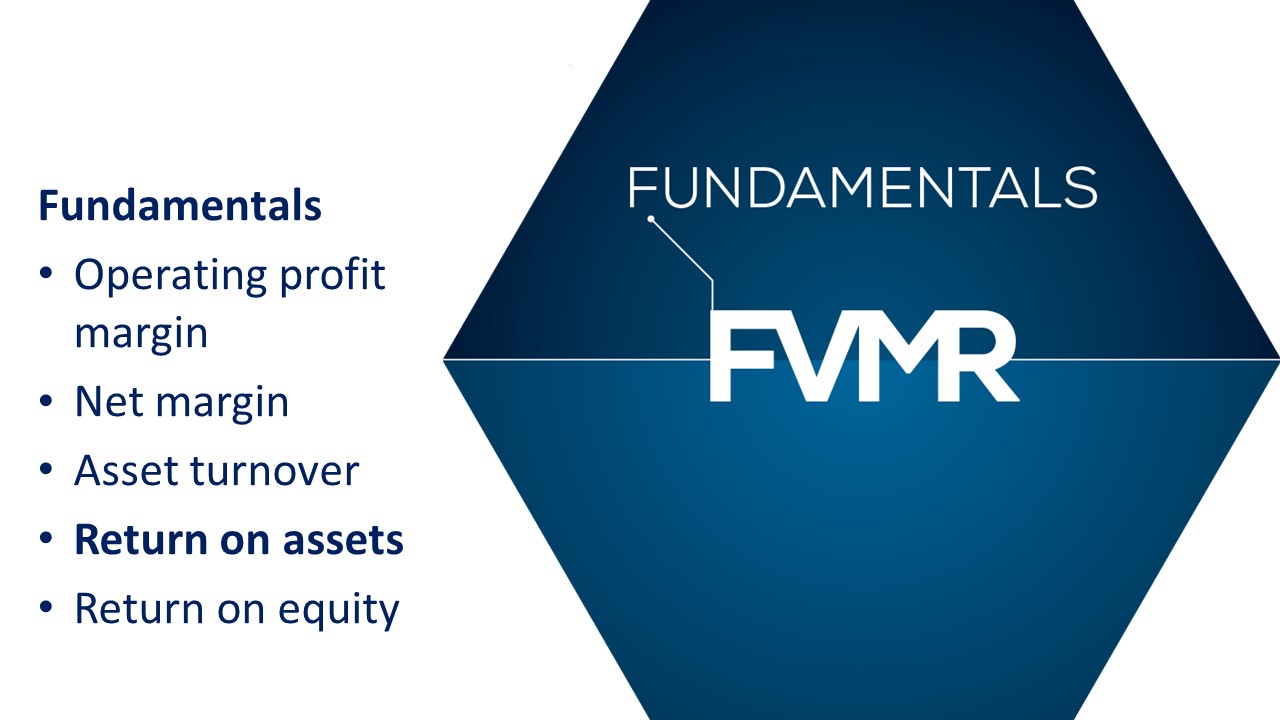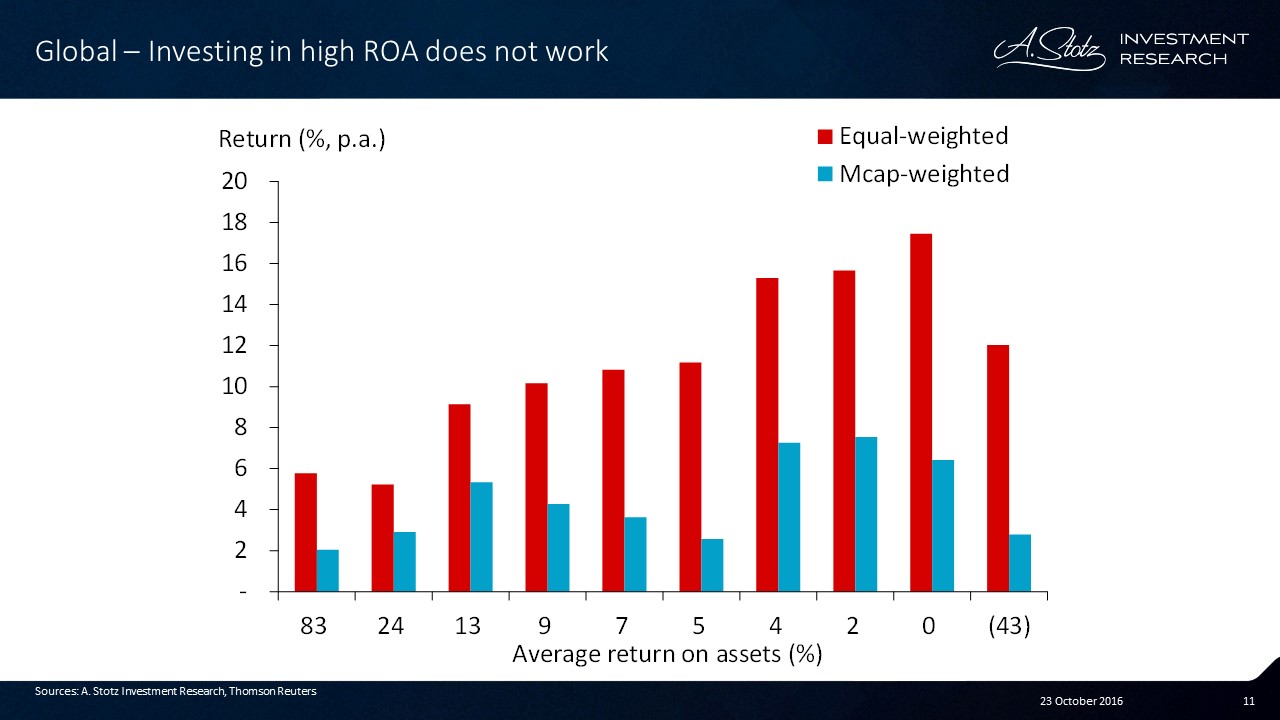Investing Is Not Just Buying Highly Profitable Companies
At A. Stotz Investment Research we look at investing through our FVMR framework: Fundamentals, Valuation, Momentum, and Risk. To come up with investment strategies for portfolios that should generate above-benchmark return we do a lot of backtesting.
Below you can see a few factors that we consider when we look at the fundamentals of a company.
In this post, we test return on assets to see if this factor can generate outperformance.
Hypothesis
Investing in companies with high return on assets (ROA) generates outperformance.
Universe
When backtesting, you should use original statements (and not re-stated) to avoid hindsight bias. When you backtest you also need to know and adjust for when a company closes its books. A company may close its books in December but that data is only available some months after on the announcement date. Focus on the announcement date when you backtest.
This was our process to come up with a global universe to test our hypothesis:
- Started with all companies listed anywhere in the world with a market capitalization of more than or equal to US$40m, which left us with 26,564 companies
- Applied a US$50m minimum market capitalization screen, which left us with 25,039 companies
- Filtered out illiquid stocks with a three-month average daily turnover of less than US$250,000 and was left with 16,270 stocks
- Excluded stocks of financial companies
- Excluded companies that did not close their books in December
- We removed 6,510 stocks (40%), leaving 9,760
Methodology
- On the last day of March of each year we ranked all stocks from highest ROA to lowest
- Divided that list into deciles
- Measured the share price performance of each decile over the coming 12 months
- Re-ranked after 12 months and reallocated the money of each decile into the new stocks included in each decile
- Repeated this process for 10 years
Results
Investing in high ROA companies doesn’t work. You can see that the companies with the highest ROA didn’t return the highest return irrespective of weighting scheme.
The results, in fact, indicate that companies with low ROA generate a higher return. Why is this? We can’t know for certain based on this study alone. A possible explanation could be mean reversion, i.e. that highly profitable companies becomes less profitable and vice versa.
Investing in high ROA companies still doesn’t work when we look at risk-adjusted return.
The best risk-adjusted return is actually in the deciles with low ROA, but there is no strong relationship.
Conclusion
Our hypothesis turned out to be wrong, we can’t find a direct relationship between past ROA and future returns. Investing based on ROA alone doesn’t seem to work.
It’s not uncommon when backtesting that you find that a factor doesn’t work. There can be many reasons for it e.g. that the market has already priced it in, that the test is conducted on a too long or too short time period and much more.
What do you think about these findings on ROA? Are you considering ROA when investing in a stock? How does it work for you and are you doing anything differently?
Share your ideas and experience in a comment below.
DISCLAIMER: This content is for information purposes only. It is not intended to be investment advice. Readers should not consider statements made by the author(s) as formal recommendations and should consult their financial advisor before making any investment decisions. While the information provided is believed to be accurate, it may include errors or inaccuracies. The author(s) cannot be held liable for any actions taken as a result of reading this article.




